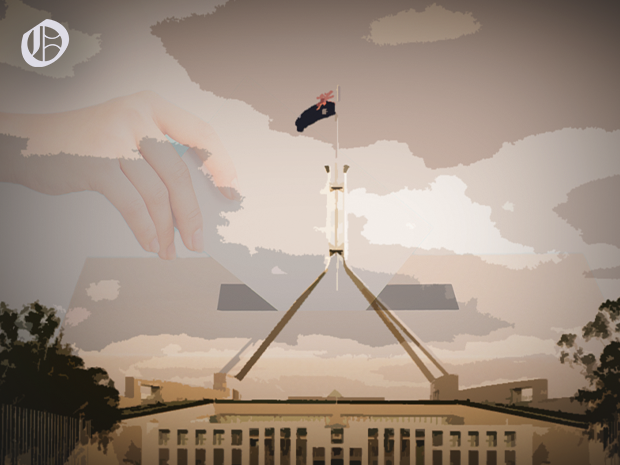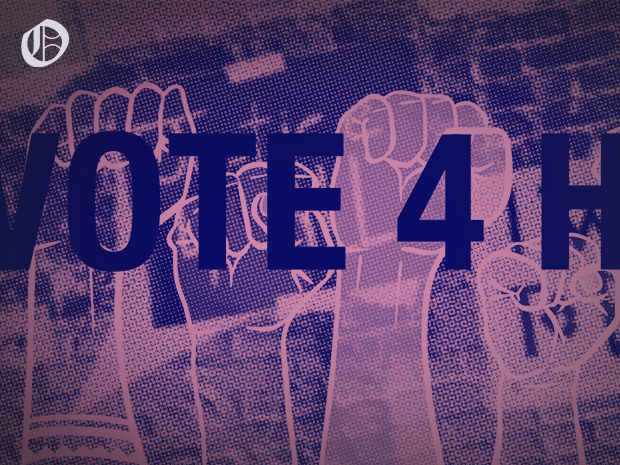Cross-Town Rivals: Do UC and ANU Face a Similar Financial Fate?

Written by Finn Slattery-O’Brien
It is no secret that universities all around Australia are struggling. Since the pandemic, they have faced international student caps, research and development (R&D) funding cuts and even the US government’s politicisation of research grants.
And Canberra is no different. Despite being the national capital, its higher education institutions are by no means shielded from unfavourable federal policies.
Some may argue that Canberra’s semi-regional location means its universities have been more affected by the pandemic, as international students return to the major cities first. For example, ANU projects a decline in international student enrolments even as the University of New South Wales reports a 16% increase in numbers. The federal government’s student cap system also has a large role to play in determining the caps applied to different universities, mostly based on pre-pandemic levels.
But is that it? Are the University of Canberra (UC) and the Australian National University (ANU) simply geographically and politically unlucky in their post-pandemic rebound. Or is there something more at play?
ANU’s financial crisis involves a deficit of $250 million, a structural reorganisation scheme to limit spending, dubbed ‘Renew ANU’, and a new Vice-Chancellor who has become the centre of significant controversy.
As of late-May, barely six-months after ‘Renew ANU’ was commenced, there has been countless articles and protests centering on the alleged lack of transparency and accountability on the part of ANU leadership.
Meanwhile, UC is experiencing a projected deficit of $36 million with a student population of 18,000, compared to ANU’s larger student population of 22,000 (as well as UC generally having a smaller operating budget and fewer assets).
To date, UC has cut about 150 jobs. It reported last year at the beginning of the financial crisis that, to become financially sustainable, at least 200 jobs total would have to go. This suggests there is still some job-cutting to be done before the process is completed. UC has also experienced significant and ongoing leadership changes.
Both universities have also established voluntary separation programs to help with cost-cutting.
Crisis and Consultation
ANU’s own financial crisis has been more than well-documented elsewhere, and would serve little purpose here to continue to dive any deeper.
UC’s financial crisis, however, is significantly different to ANU’s, despite being a mere 15-minute drive away.
Like ANU, UC had its own consultation period – which are often stipulated under staff franchise agreements – before academic restructuring and job cuts commenced.
While the ANU has allegedly failed to engage transparently with the restructuring process, UC leadership have been “commended” for being “transparent about the cuts”.
Observer reached out to the National Tertiary Education Union (NTEU) ACT Division Chief, Dr Lachlan Clohesy to comment on the cuts.
He stated that compared to UC, ANU is a “rich university with extensive assets”, and that “while nobody likes job losses”, at UC there was at least “a level of appreciation” from the staff for the “willingness of UC leadership to…transparently explain the situation.”
According to Dr Clohesy, “[t]hat is not the level of transparency we have had at ANU.”
He explained that UC held ‘town hall’ staff consultations in an accessible, hybrid format where the VC answered questions “directly in a manner which isn’t scripted”.
“By contrast”, Clohesy said, “for ANU staff to see the Vice-Chancellor directly answer unscripted questions, they need to watch Senate Estimates.”
“[S]taff have had to find out information through Freedom of Information requests and media leaks, rather than from ANU leadership.”
“As a result, there is no trust or confidence in ANU leadership.”
In response to a similar set of questions, an ANU spokesperson told Observer they are not able to comment on UC’s financial position.
The spokesperson disputed the claim that the ANU had not been transparent, both generally and specifically in regards to the town hall and staff consultation process during an ongoing period of job-cuts.
The spokesperson iterated that “through careful intervention”, the $200 million projected deficit has been reduced to “an actual deficit of $140 million.” The spokesperson also maintained that while “progress towards our goal” has been made, this goal “hasn’t changed.”
This is at odds with the perspective of Dr Clohesy. He believes that since the Renew ANU initiative set a “$100 million” reduction target for staff expenditure – and the NTEU has calculated this figure to equate to approximately 600 full-time positions – “this target has substantially been met”. In his eyes, this thereby removes any “financial rationale for further job cuts.”
The ANU spokesperson also maintained that despite the apparently greater support for UC’s town hall processes (in contrast to ANU staff voting for no-confidence in ANU leadership), ANU’s own town halls have still been part of an “open and transparent process from the outset.”
“As part of Renew ANU, 20 town halls were held between October 2024 and March 2025, with a total of 9,784 staff attendees,” the spokesperson said.
“In total, there have been over 194,000 visits to the Renew ANU microsite.”
“We have been clear about the reasons why we need to make changes. The University’s expenses have steadily increased, while revenue has not kept pace…Without structural intervention, the University will not be financially sustainable.”
Note that unlike the regular attendance of UC VCs to town halls, the Australian Financial Review (AFR) reported that “it is hard to find examples of [Genevieve Bell’s] public engagement.”
Further, an adequate and timely consultation process is contractually required of ANU when restructuring or job-cutting schemes are being implemented.
Euro Summer, Anyone?
While the ABC at least suggested that UC has had a more transparent cost-cutting process, that is not to say UC is free of financial frivolity.
The Australia Institute, a public policy think-tank, has raised concerns about the University of Canberra’s spending practices, stating: “UC has spent big on discretionary things that aren’t education or research.”
“[UCs] 2023 annual report shows that the university spent $16.7 million on consultants’ fees, $9 million on ‘outsource management fees’, $697,000 on ‘sponsorships’, nearly $4.4 million on travel and just shy of $3 million on advertising.”
“…[t]hose items cost more in total than the 150 jobs that UC has since cut to repair its deficit.”
Like ANU, a significant proportion of this discretionary spending at UC has gone to consultancy firms, with $16.7 million being spent on consultants in 2023.
In comment to Observer, UC cited a media release by the new VC, former Labor MP Bill Shorten, that there is a “genuine commitment to do everything possible to return to a balanced budget by the end of 2025” and that “the approach to fiscal sustainability remains a collaborative one between the University Council, senior leadership, union, and staff.”
Additionally, VC Shorten has had his salary doubled by leaving Cabinet and taking up the role at UC on a contract worth $860,000 per annum. This was even after being negotiated downwards from over $1 million as a result of UC’s dire financial straits.
ANU’s VC Bell is still on a salary of $1 million per annum, despite taking a 10% pay cut as the restructuring process began.
UC is not alone in allegedly excessive travel expenditures.
It was reported by the Australian Financial Review that ANU “splurged $80,000” on a “networking event” in Davos, Switzerland.
The event was attended by 80 people, with the proclaimed purpose of “promoting the university’s mission.”
On top of this, ANU “spent $73,551 for flights and trains, including $20,097 for Bishop, $17,668 for Bell and $16,950 for Schmidt.”
Thousands more was also spent on other travel expenses in Switzerland and parts of Europe.
Observer understands that these travel budgets have now been cut by at least half.
Leadership Carousel
While ANU’s own leadership change – the appointment of Genevieve Bell to the Chancelry – has inspired much debate in the media over her leadership style, UC has arguably had the more disruptive experience in the leadership department.
Across the span of fifteen months, UC has held five different VCs.
First, Professor Paddy Nixon resigned, for “personal reasons” in December 2023.
Professor Nixon was replaced by Professor Lucy Johnston, whose tenure was meant to extend till February 2025. Instead, she was replaced by Professor Stephen Parker.
Professor Parker was also formerly VC eight years ago before resigning, and resigned from the role again in December 2024, claiming he had “lost confidence” in the university council.
The Deputy Vice-Chancellor, Michelle Lincoln, acted temporarily in the role until former Labor MP Bill Shorten took over the role in February of this year.
Reportedly, Professor Nixon was paid up to $1.8 million upon his departure, although this has not been confirmed by UC. It was maintained that this was not a “major contribution” to the university’s financial difficulties.
Observer reached out to UC for comment on their recent leadership struggles. In response, UC cited a previous statement following an ACT Legislative Committee hearing issued on 21 February 2025.
The university recognises “the challenges the University is working through”, and highlights that despite the recent instability in key positions, University leadership still aspires to “rejuvenate the institution and re-establish UC as a leading choice for education and research in Australia.”
Who Do I Blame?
The financial crises facing ANU and UC share several similarities, with the leadership at both universities attributing the blame to systemic issues rather than to shortcomings in their own management.
The ANU spokesperson highlighted that “[t]he COVID pandemic impacted all Australian universities, while changes in government policy, the management of international student numbers and macro-economic forces have also created new headwinds which are unlikely to diminish.”
Simultaneously, it is arguable that significant financial mismanagement, like the discretionary expenses outlined above, has contributed to the severity of the crises faced by Canberra’s two major tertiary institutions.
At the same time, there are critiques of the Australian university sector’s heavy reliance on international students and the federal government’s toing-and-froing on policy. Perhaps this helps explain why so many Australian universities seem to be in decline.
Whether ANU and UC will once again reach the comparatively dizzying heights of the education sector’s pre-COVID boom remains to be seen.
More to come.
Graphics by Shé Chani
Know something we don’t know? Email [email protected] or use our anonymous tip submission.
If you have an issue with this article, or a correction to make, you can contact us at [email protected], submit a formal dispute, or angry react the Facebook post.
Want to get involved? You can write articles, photograph, livestream or do web support. We’re also looking for someone to yell “extra!” outside Davey Lodge at 1AM. Apply today!








